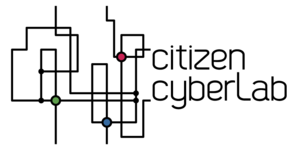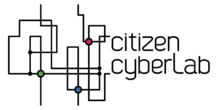|
|
| Line 14: |
Line 14: |
| |field_contact_person_URLs=support@eyewire.org | | |field_contact_person_URLs=support@eyewire.org |
| |field_team_location=Massachusetts Institute of Technology - 77 Massachusetts Ave, Cambridge, États-Unis | | |field_team_location=Massachusetts Institute of Technology - 77 Massachusetts Ave, Cambridge, États-Unis |
| | |field_participant_task_description=The player's task is to select the areas that the AI missed, thus improving the trace of the neuron. In the interface, a three-dimensional view shows the trace of the neuron through the volume, while the player can scroll up and down in the two-dimensional slices to follow the path. The player clicks on areas in the slices to add them to the trace. The AI automatically fills in the parts of the neuron that it detects are part of the player's clicked area. Once the player has decided the task is complete, the player submits the task and is presented with another task. |
| |field_Haklay_typology=crowdsourcing | | |field_Haklay_typology=crowdsourcing |
| |field_volonteer_computing=no | | |field_volonteer_computing=no |
| Line 21: |
Line 22: |
| |field_data_types_to_manipulate=3D manipulation | | |field_data_types_to_manipulate=3D manipulation |
| |field_participant_contribution_type=data analysis | | |field_participant_contribution_type=data analysis |
| |field_tutorials_documentation=N/A | | |field_gaming_genre=other |
| |field_peer_to_peer_guidance=N/A | | |field_tutorials_documentation=yes |
| |field_training_sequence=N/A | | |field_peer_to_peer_guidance=yes |
| |field_individual_performance_feedback=N/A | | |field_training_sequence=strong |
| |field_collective_performance_feedback=N/A | | |field_individual_performance_feedback=yes |
| |field_research_progress_feedback=N/A | | |field_collective_performance_feedback=somewhat |
| | |field_research_progress_feedback=yes |
| |field_member_profiles=no | | |field_member_profiles=no |
| |field_community_tools=website, blog, forum, wiki | | |field_community_tools=website, blog, forum, wiki |
| Line 34: |
Line 36: |
| |field_socialsoftware_sites=N/A | | |field_socialsoftware_sites=N/A |
| |field_team_work=N/A | | |field_team_work=N/A |
| | |field_completion_level=Medium |
| |field_last_edition=2013/09/25 | | |field_last_edition=2013/09/25 |
| }} | | }} |
|
| |
|
| {{Free text}} | | {{Free text}} |
Cs Portal > List of citizen science projects > EyeWire - (2013/09/25)
THIS PAGE DESCRIBE A CITIZEN SCIENCE PROJECT
Start date : 2012/12/10
- Beta start date : N/A
- End date : Still open.
Subject
- Natural sciences > Neurology (medicine"medicine" is not in the list (nature/conservation, environment/climate, geography/urbanism, history/archeology, biology/medicine/neuroscience, physics, space, N/A, other) of allowed values for the "Has citizen science subject area" property.)
- Others in the same subject areas: Air Quality with Biomarkers, Andromeda Project, Bat detective, Budburst... further results
- Others projects about medicine"medicine" is not in the list (nature/conservation, environment/climate, geography/urbanism, history/archeology, biology/medicine/neuroscience, physics, space, N/A, other) of allowed values for the "Has citizen science subject area" property.:
⇳ Description
EyeWire is a game where volounteers map the 3D structure of neurons. By playing EyeWire, they help map the retinal connectome and contribute to the neuroscience research conducted by Sebastian Seung's Computational Neuroscience Lab at MIT. The connectome is a map of all the connections between cells in the brain. Rather than mapping an entire brain, we’re starting with a retina.
➠ Purpose
Identify and Maps all the neurons in the retina.
? Research question
MAIN TEAM LOCATION
Loading map...
{"minzoom":false,"maxzoom":false,"mappingservice":"leaflet","width":"300px","height":"270px","centre":false,"title":"","label":"","icon":"","lines":[],"polygons":[],"circles":[],"rectangles":[],"copycoords":false,"static":false,"zoom":false,"defzoom":14,"layers":["OpenStreetMap"],"image layers":[],"overlays":[],"resizable":false,"fullscreen":false,"scrollwheelzoom":true,"cluster":false,"clustermaxzoom":20,"clusterzoomonclick":true,"clustermaxradius":80,"clusterspiderfy":true,"geojson":"","clicktarget":"","imageLayers":[],"locations":[{"text":"","title":"","link":"","lat":42.3591524,"lon":-71.0933119,"icon":""}],"imageoverlays":null}
Massachusetts Institute of Technology - 77 Massachusetts Ave, Cambridge, États-Unis
CONTRIBUTION TYPE: data analysis
PARTICIPATION TYPOLOGY: crowdsourcing
GAMING GENRE NONE
GAMING ELEMENTS: NONE
◉ Tasks description
The player's task is to select the areas that the AI missed, thus improving the trace of the neuron. In the interface, a three-dimensional view shows the trace of the neuron through the volume, while the player can scroll up and down in the two-dimensional slices to follow the path. The player clicks on areas in the slices to add them to the trace. The AI automatically fills in the parts of the neuron that it detects are part of the player's clicked area. Once the player has decided the task is complete, the player submits the task and is presented with another task.
⤯ Interaction with objects
▣ Interface
- Data type to manipulate: 3D manipulation
- interface enjoyment:
- Interface usability:
GUIDANCE
- Tutorial: ✓
- Peer to peer guidance: ✓
- Training sequence: Somewhat
FEEDBACK ON
- Individual performance: ✓
- Collective performance: Somewhat
- Research progress: Somewhat
❂ Feedback and guidance description
COMMUNITY TOOLS
- Communication: website, blog, forum, wiki
- Social Network: N/A
- Member profiles:: no
- Member profile elements:
NEWS & EVENTS
- Main news site:
- Frequency of project news updates: N/A
- Type of events:
- Frequency of events :
⏣ Community description
- Community size (volounteers based) 80 000
- Role:
- Interaction form:
- Has official community manager(s): N/A
- Has team work N/A
- Other:
- Community led additions:
Other information
PROJECT
Url:http://eyewire.org/
Start date: 2012/12/10
End date: Still open
TEAM
Official team page:http://wiki.eyewire.org/en/Who_we_are_and_what_we_do.
Leader: Sebastian Seung's
Contact: support@eyewire.org
Main location: Massachusetts Institute of Technology - 77 Massachusetts Ave, Cambridge, États-Unis
PROJECT DEFINITION
Subject
Natural sciences > Neurology (medicine)
Description
EyeWire is a game where volounteers map the 3D structure of neurons. By playing EyeWire, they help map the retinal connectome and contribute to the neuroscience research conducted by Sebastian Seung's Computational Neuroscience Lab at MIT. The connectome is a map of all the connections between cells in the brain. Rather than mapping an entire brain, we’re starting with a retina.
Purpose.
Identify and Maps all the neurons in the retina.
.
ABOUT PARTICIPANT TASKS
Tasks description.
The player's task is to select the areas that the AI missed, thus improving the trace of the neuron. In the interface, a three-dimensional view shows the trace of the neuron through the volume, while the player can scroll up and down in the two-dimensional slices to follow the path. The player clicks on areas in the slices to add them to the trace. The AI automatically fills in the parts of the neuron that it detects are part of the player's clicked area. Once the player has decided the task is complete, the player submits the task and is presented with another task.
.
| Grey typology |
Participation typology |
Contribution type: |
|
|
| Computing: |
NO |
Thinking: |
YES |
| Sensing: |
NO |
Gaming: |
YES |
|
|
|
| Crowdsourcing |
☑ |
Distributed intelligence |
☐ |
| Participatory science |
☐ |
Extreme citizen science |
☐ |
| Science outreach |
☐ |
| |
|
| Data collection |
☐ |
| Data analysis |
☑ |
| Data interpretation |
☐-------- |
|
| Gaming |
| Genre: other |
Gaming elements: |
| Interface |
| Data type to manipulate: 3D manipulation |
interface enjoyment:
Interface usability: |
Member profiles::no
Member profile elements: |
ABOUT GUIDANCE AND FEEDBACK
| Guidance |
Feedback on |
| Tutorial and documentation: |
YES |
| Training sequence: |
SOMEWHAT |
| Peer to peer guidance: |
YES |
|
| individual performance: |
YES |
| collective performance: |
Somewhat |
| research progress: |
YES |
|
.
| Tools |
News & Events |
|
Communication: website, blog, forum, wiki
Social Network: N/A
|
Main news site:
Frequency of project news updates: N/A
Type of events:
Frequency of events :
|
| Community description |
|
Community size (volounteers based): 80 000
Role:
Interaction form:
Has official community manager(s): N/A
Has team work N/A
|
Other information about community:
Community led additions:
OTHER PROJECT INFORMATION
Photo.jpg
Yes
[[has completion level::Medium]
http://wiki.eyewire.org/en/Who we are and what we do.
Massachusetts Institute of Technology - 77 Massachusetts Ave, Cambridge, États-Unis
support@eyewire.org
Yes
Neurology
Natural sciences
medicine"medicine" is not in the list (nature/conservation, environment/climate, geography/urbanism, history/archeology, biology/medicine/neuroscience, physics, space, N/A, other) of allowed values for the "Has citizen science subject area" property.
Identify and Maps all the neurons in the retina.
EyeWire
The player's task is to select the areas that the AI missed, thus improving the trace of the neuron. In the interface, a three-dimensional view shows the trace of the neuron through the volume, while the player can scroll up and down in the two-dimensional slices to follow the path. The player clicks on areas in the slices to add them to the trace. The AI automatically fills in the parts of the neuron that it detects are part of the player's clicked area. Once the player has decided the task is complete, the player submits the task and is presented with another task.
data analysis
crowdsourcing
3D manipulation, other:
Thinking: yes
Computing: no
Sensing: no
Gaming: yes
other
yes
yes
strong
yes
somewhat
yes
no
N/A
website, blog, forum, wiki
N/A
80 000
N/A
N/A
Medium
Bibliography



